
Your business resources are draining away due to digital marketing mistakes right now. Companies waste 60% of their marketing budgets on ineffective campaigns. The problem runs deeper as almost half of all organizations lack a clear digital marketing strategy.
The stakes keep rising. Global digital marketing spend will hit $740.3 billion in 2024, yet businesses continue to make mistakes that get pricey and hurt their results. Mobile devices generate 63% of all web traffic, but many companies’ websites still aren’t mobile-friendly a critical error to avoid this year.
Our years of research reveal clear patterns in businesses’ recurring digital marketing mistakes. Mobile traffic dominates at 62.66% of worldwide web visits, and 80% of mobile searches result in conversions. These numbers make the cost of mistakes higher than ever. This piece breaks down the 13 most expensive digital marketing mistakes and shows you how to fix them before they hurt your 2025 revenue.
Not Setting a Clear Digital Marketing Strategy
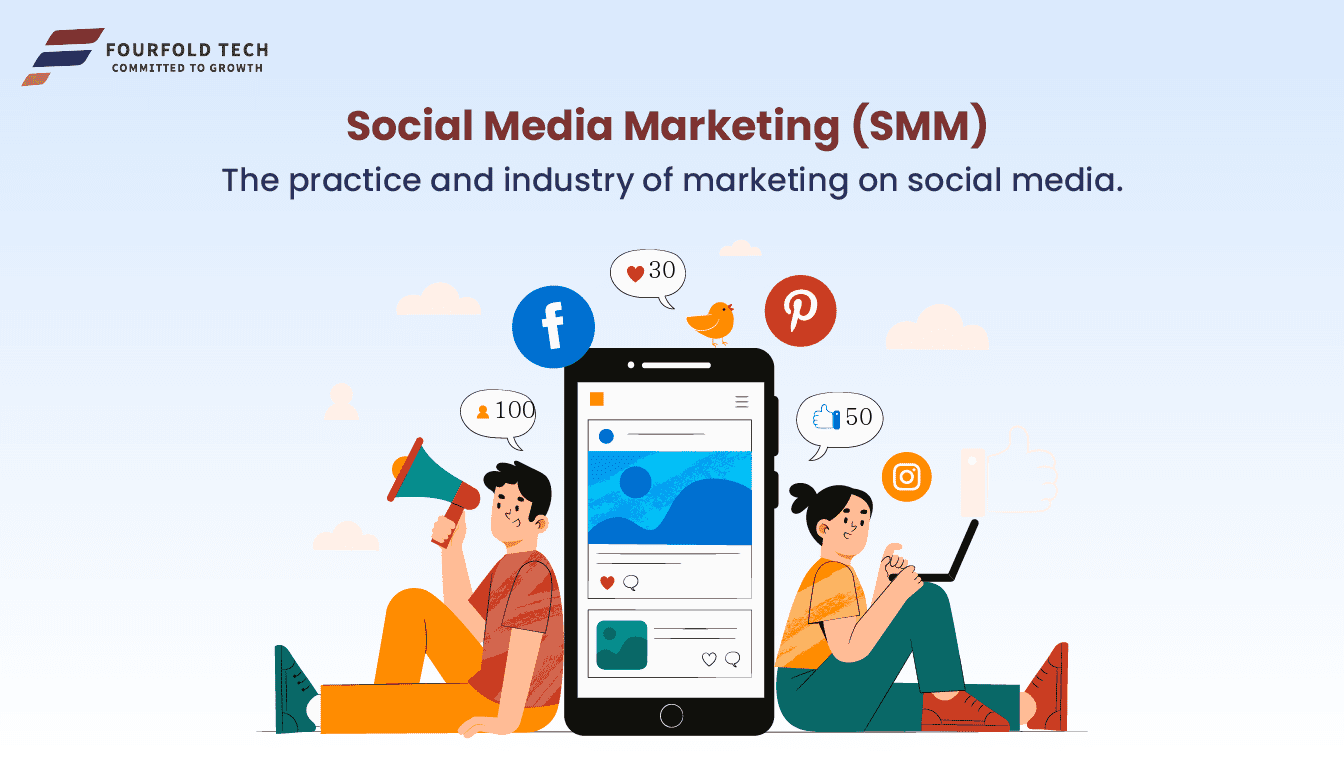
Launching a boat without navigation tools guarantees you’ll get lost at sea. The same applies to digital marketing – businesses in 2025 waste money by starting campaigns without a solid strategy.
What is a digital marketing strategy?
A digital marketing strategy serves as a complete plan that shows how businesses can use digital channels to connect with their audience and reach specific marketing goals. This blueprint defines your objectives and target audiences. It also creates a framework that connects your website, social media, email, and search engine activities.
A strategy goes beyond day-to-day tactics. It answers essential questions about your goals and their importance. Your digital marketing campaigns and tactics need this foundation to work together and achieve business objectives.
Why not having one costs you money
Here’s a startling fact – all but one of these companies have a defined digital marketing strategy, yet they continue digital marketing efforts. This approach without direction drains money quickly.
Companies without strategies often face these issues:
- They struggle to set clear goals and use resources wisely
- The team misreads market demand and online marketplace dynamics
- Money gets wasted as departments buy similar tools
- They fail to stand out in competitive markets
- Gut feelings drive decisions instead of data
These businesses also see fewer bookings, lower returns on investment, and limited brand awareness.
How to build a strong digital marketing strategy
Building an effective strategy requires these key steps:
Your SMART goals (specific, measurable, achievable, relevant, and timely) should match your business objectives. Don’t just say “increase awareness.” Instead, target “25% more guide downloads each quarter”.
Create detailed buyer personas using real data and research. Your marketing becomes more effective when you know your customers’ location, income, occupation, interests and goals.
Look at your current digital assets to find strengths and areas that need improvement.
Choose the right KPIs to track success – focus on conversion rates, cost per lead, and customer lifetime value.
Want to create a powerful digital marketing strategy? The experts at Fourfold Tech can analyze your website and digital marketing approach economically.
Ignoring Your Target Audience
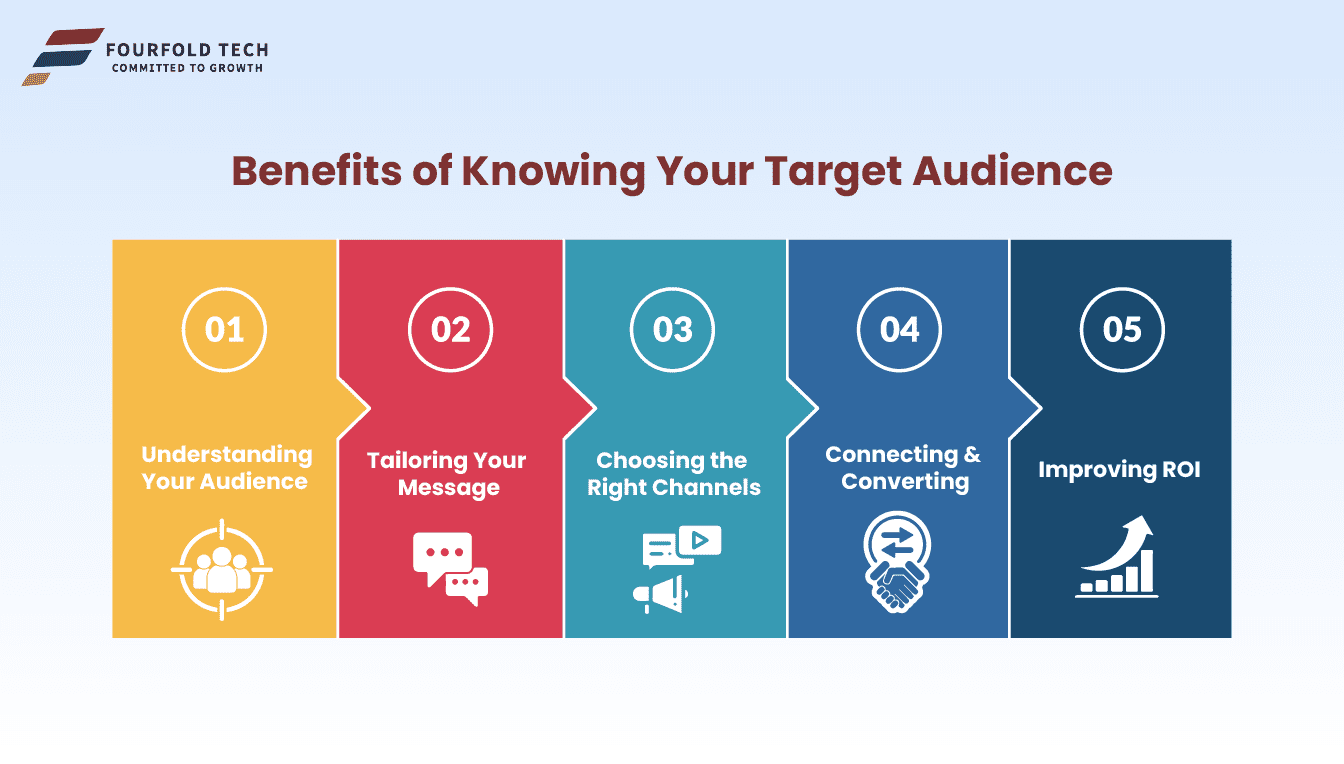
Personalization has become a necessity, not just an option in today’s competitive digital world. Your business could make one of the costliest digital marketing mistakes by not paying attention to your target audience in 2025.
What does it mean to ignore your audience?
Businesses ignore their audience by making assumptions about customer needs without proper data and research validation. Generic content that tries to appeal to everyone but strikes a chord with no one is a common result. Many businesses try to reach everyone instead of taking a targeted approach that could bring better results.
Signs you’re ignoring your audience include:
- Content lacking specific focus
- Wrong communication channel choices
- High traffic numbers with poor conversion rates
- Bad campaign feedback
- Looking at all customers as one group
Why audience understanding is critical
Your digital marketing success and bottom line depend heavily on how well you know your audience. About 68% of consumers expect individual-specific experiences, yet marketers struggle to deliver these expectations.
Numbers tell a compelling story. Audience segmentation can boost revenue by up to 760%. On top of that, it drives 20% higher customer satisfaction and 10-15% higher conversion rates. Data shows 80% of consumers buy more from companies that understand their personal needs.
Your audience knowledge helps you:
- Make smart budget, time and resource decisions
- Find people most likely to participate with your brand
- Build content that strikes a chord with potential customers
- Get and keep more customers
- Boost satisfaction through relevant messages
How to define and segment your audience
Start by looking at your current product or service users. Get demographic details (age, gender, location) and psychographic information (lifestyle, interests, values) using analytics, surveys, and social media data.
Customer personas should come next. These detailed profiles represent different audience segments. Make them specific enough to guide your marketing choices while keeping them broad enough to cover meaningful customer groups.
Your strategy should include both known and unknown audience groups. Known audiences have already connected with your brand and cost 10 times less to convert. Unknown audiences fit your ideal profiles but haven’t participated yet.
After identifying segments, keep refining them as new data comes in. Note that 82% of marketers say quality customer data is vital to their success. This makes ongoing audience analysis an essential business practice rather than a one-off task.
Neglecting SEO Basics
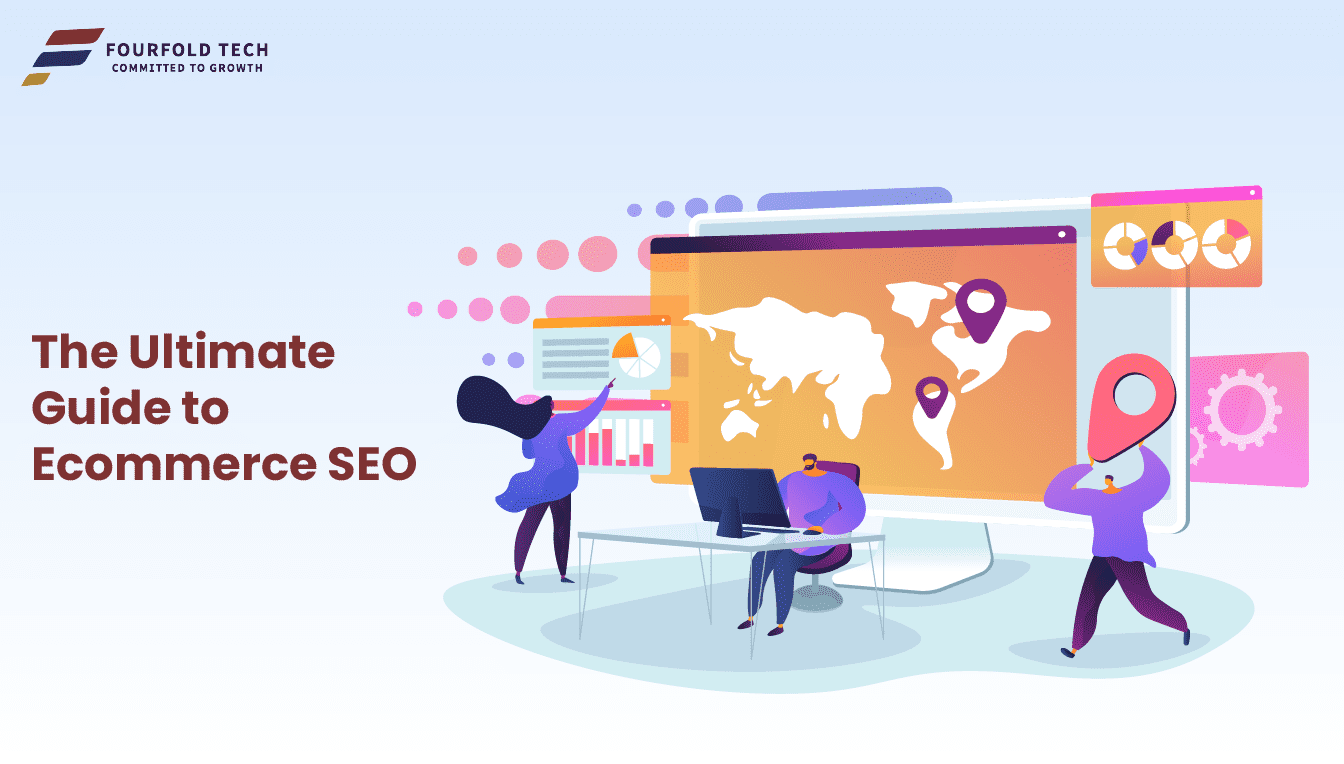
Your online success depends on search engine visibility, yet many businesses ignore simple SEO practices. This oversight quietly damages your online presence as your competitors attract your potential customers.
What are SEO basics?
Simple SEO techniques help improve your website’s visibility in search engines. These elements include technical optimization (making your site crawlable and indexable), on-page optimization (relevant, quality content), and off-page optimization (building reputation through backlinks). SEO helps search engines understand your content and users find your site through search.
Core SEO fundamentals include:
- A well-organized site structure and navigation
- Mobile-friendly design and quick loading speeds
- High-quality content with strategic keywords
- Links between related pages
- Well-crafted meta titles and descriptions
Why SEO is still essential in 2025
The digital world keeps changing, but SEO remains crucial in 2025. Organic search generates more than 53% of all website traffic, while paid search accounts for just 15%. On top of that, it delivers better ROI than any other marketing channel.
AI and zero-click searches haven’t reduced SEO’s value they’ve revolutionized it. More than 58.5% of searches now end without clicks. Companies with strong SEO strategies see better engagement, higher conversion rates, and increased revenue from their visitors.
How to implement foundational SEO practices
Your site needs a solid technical foundation. Submit your sitemap to Google and verify your site through Google Search Console to track performance. You should optimize your content by naturally including target keywords in titles, headings, and body text.
Create “E-E-A-T” content that shows Experience, Expertise, Authority, and Trustworthiness. Yes, it is true that Google’s algorithm now reviews content quality based on these factors.
Build links between related pages so search engines can understand your site’s structure. You should also optimize images with descriptive filenames and alt text.
SEO requires regular reviews and adjustments as search algorithms evolve. All the same, the foundations stay consistent: put users first, and better search rankings will follow.
Overlooking Keyword Research
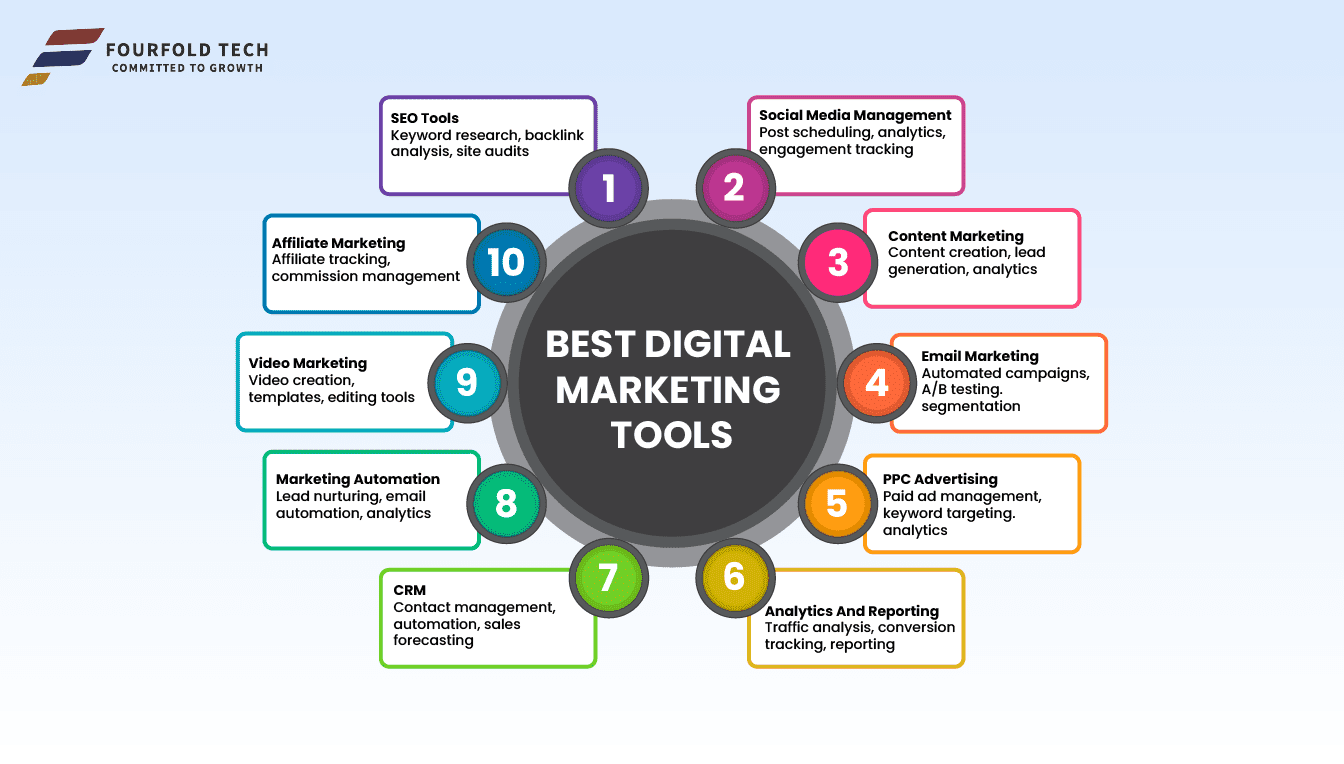
Most businesses dive into content creation without taking a critical first step – proper keyword research. This digital marketing mistake quietly damages your visibility and wastes resources on content that might never reach your target audience.
What is keyword research?
Keyword research helps you find and analyze search terms people use to find information online. The scope goes beyond Google to include conversational platforms, AI chatbots, and social media. Google remains dominant with 88% of users, but social media searches account for 31% and AI chatbots for 12%. Your detailed keyword research should cover all platforms where your audience might look for information.
Why keyword research matters
The right keyword research directly affects your bottom line by helping you find keywords that:
- You can realistically rank for
- Let you create excellent content
- Match your business goals with search intent
Good keyword research offers these significant benefits:
- Shows you how buyers behave, what problems they face, and how they search
- Brings together strategies from different marketing channels
- Protects your strategy against SEO changes
- Boosts revenue by targeting valuable keywords
- Shows if your site can rank for specific terms
When you skip this step, you might create purposeless content, fight for impossible rankings, or chase keywords nobody searches for. Your content might never get the visibility it deserves.
How to conduct effective keyword research
The best approach starts with listing topics based on your business expertise. Next, pick keywords for conversion pages that match purchase intent. You should then choose supporting content keywords for different buyer stages.
Tools like Google Keyword Planner, Ahrefs, or Semrush help analyze search volume, competition levels, and related keyword ideas. Long-tail keywords (three or more words) work best because they have less competition and convert better.
A strategic content plan emerges when you map keywords to specific topics. This organized approach ensures each content piece plays a specific role in your marketing strategy.
Forgetting Mobile Optimization

Your customers view your website on their mobile phones. Many businesses still ignore this crucial part of their online presence. This mistake costs companies both revenue and visibility as we move toward a mobile-first world.
What is mobile optimization?
Mobile optimization makes sure visitors who use smartphones and tablets get an experience designed for their devices. It includes four main elements:
- Responsive design that automatically adjusts to different screen sizes
- Fast loading times (ideally under three seconds)
- Touch-friendly navigation with properly sized buttons
- Readable content without requiring users to zoom or scroll horizontally
Mobile users behave differently than desktop users. They often check content while moving around with limited time and focus.
Why mobile-first design is non-negotiable
The numbers show why skipping mobile optimization will get pricey for your digital marketing:
Mobile devices generate over 60% of all web traffic. Mobile search visits are nowhere near desktop searches – they’re 313% higher as of 2023. This trend will grow since 96% of Americans aged 18-29 own smartphones.
Google uses mobile-first indexing for most websites. Your site’s mobile version determines search rankings. Users are five times more likely to leave your page when it’s not mobile-optimized. This directly hits your conversion rates and revenue.
How to optimize your site for mobile
Google recommends responsive design. This approach serves identical HTML code across all devices while CSS adjusts the display based on screen size. You won’t need separate mobile URLs.
Page speed matters more than ever. Users expect pages to load in under three seconds. About 53% leave sites that take longer.
Make buttons and interactive elements big enough for fingertips (at least 44×44 pixels). Your navigation should be simple with clear menus that work without zooming.
Short paragraphs and brief introductions make content readable on smaller screens. White space helps too. Test your site on actual mobile devices to ensure it works well in real life.
Ignoring Social Media Strategy

Businesses keep making a mistake that gets pricey – they post randomly on social media platforms. Many brands post whenever they feel like it and hope something works. This approach wastes marketing money in the digital void.
What is a social media strategy?
A social media strategy is a complete written plan that shows how your business will use social platforms to reach specific goals. This roadmap details your objectives, target audience, platforms to use, content types, and measurement metrics. Random activities become purposeful actions that support broader business goals.
This well-laid-out approach has:
- Your brand’s voice and messaging definition
- The right platforms that match your audience
- Growth and engagement goals you can measure
- A content calendar based on peak posting times
Why social media needs a plan
Your business risks losing much of its potential market without a strategy. Social media platforms are vital channels for business growth since about one-third of the world’s population uses them actively.
A proper strategy helps dodge common mistakes. Companies that put money into social media often fail to improve their results when they work without direction. A clear strategy will give a proper way to use resources. Brands now spend about one-sixth of their marketing budgets on social media, and this number should reach one-fifth by 2024.
How to create a winning social media strategy
Your overall business goals should guide your social media objectives. You might want to boost brand awareness, increase website traffic, get more leads, or improve customer engagement.
Research helps identify your target audience’s demographics, interests, and online behavior patterns. The next step is picking the right platforms where your audience spends time. The average American uses 7.1 social media accounts.
Create a content plan that mixes different types of posts. Most platforms work best with three to five posts weekly. Keep track of performance metrics to understand what appeals to your audience.
Your social strategy should work with other marketing efforts since omnichannel customers shop 1.7 times more often than single-channel shoppers. This approach optimizes impact and drives better results.
Inconsistent Posting and Content Scheduling
Random posting schedules ruin even the best marketing plans. This digital marketing mistake might look small, but its consequences go way beyond a quiet social media presence.
What is inconsistent posting?
Poor posting habits create more problems than just content gaps. The problems include:
- Posting multiple times in one week then disappearing for a month
- Showing up only during slow business periods
- Creating rushed content without a clear plan
This scattered approach confuses your audience and platform algorithms reward regular activity. The downward spiral becomes harder to fix once it starts.
Why consistency builds trust
Your audience starts depending on you with regular appearances. They get familiar with your voice, tone, and offerings. This familiarity creates trust that leads to customer action.
Random posting makes you look unprofessional. A dormant feed makes potential customers think your business struggles or lacks reliability. Trust needs predictability; people hesitate to buy or participate when they can’t count on your presence.
How to maintain a content calendar
Start small and smart. Pick 1-2 platforms where your ideal customers hang out and focus on 2-3 content themes with a simple goal like two posts weekly.
A well-laid-out content calendar forms the base of consistent posting and outlines your content schedule. These practical approaches help:
- Create content in batches by blocking a few hours monthly
- Use scheduling tools like Buffer, Later, or Meta Business Suite
- Review your calendar regularly (monthly or quarterly) to check what works
Content calendars save time and improve team visibility. They help everyone line up with key deadlines and responsibilities.
Spending Recklessly on Paid Ads
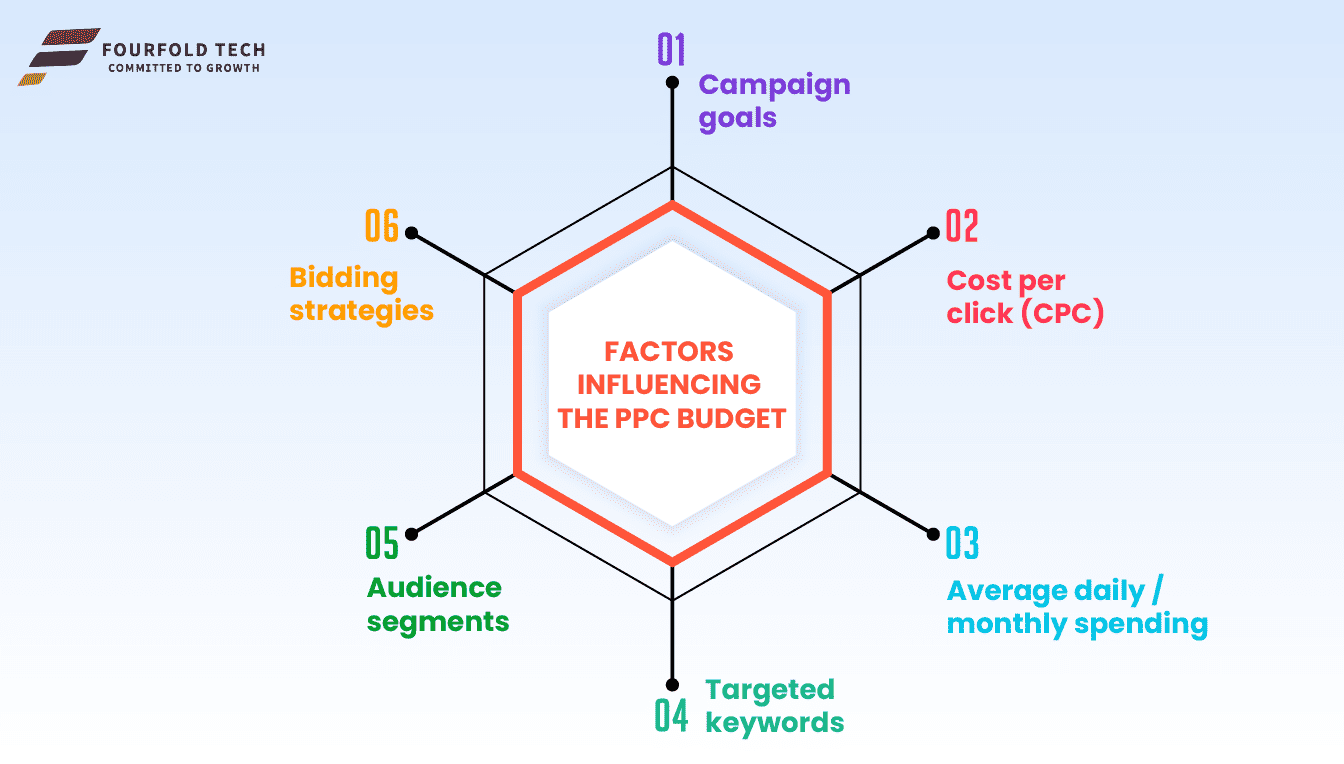
Spending money on digital ads without a strategy is like trying to fill a leaking bucket. Many businesses make this costly mistake and hurt their marketing efforts because they don’t plan or execute well.
What is reckless ad spending?
Businesses waste money on paid advertising when they don’t plan their spending or track results properly. They show ads to the wrong audiences, use low-quality creative work, pick the wrong bidding strategies, and don’t have reliable analytics. Even well-run campaigns lose 10-20% of their budget, while badly managed ones waste up to 70-80%.
Why it drains your budget
Money problems go beyond just what you spend directly. The open web’s ad spending wastes at least 23% on low-quality placements. This waste creates missed chances to invest money more wisely elsewhere. Companies also waste time and resources on paperwork like fighting account bans or dealing with complex payment systems.
How to optimize your PPC strategy
Your return on investment will improve if you:
- Put 70% of money into what works, 20% into testing new channels, and save 10% for unexpected chances
- Keep an eye on important numbers and set goals for each campaign type
- Run A/B tests to make your ads better based on results
- Look at campaigns every week and change spending based on what you see
- Put more effort into campaigns that work well by studying click-through and conversion rates
Match your campaign types to what your business needs to achieve. Set realistic budgets based on what returns you expect. Use your data analysis to spot ads that aren’t working and quickly move that money to ones that are.
Not Measuring and Analyzing Results

Marketing without analytics is like throwing darts in the dark. You might hit the target sometimes, but you won’t know how to repeat your success. Many businesses still make marketing decisions without looking at their results.
What does it mean to ignore analytics?
Companies that ignore analytics base their marketing decisions on assumptions instead of facts. A surprising statistic shows that only 23% of marketers feel confident they track the right KPIs. This creates a gap between marketing efforts and actual business results.
Why data-driven decisions matter
Evidence-based marketing turns guesswork into strategic action. Regular tracking of performance metrics helps businesses:
- Put their budget into channels that work best
- Spot failing campaigns early
- Show marketing’s direct effect on revenue
Recent studies reveal that 37.7% of CMOs check marketing analytics before making decisions. The results speak for themselves – 86% of executives who use predictive analytics saw better ROI.
How to track and analyze marketing performance
Start with clear, measurable goals that align with your business objectives. Your key performance indicators should include:
- Conversion rates that show how well campaigns work
- Cost per acquisition to manage spending better
- Customer lifetime value to see long-term results
Fourfold Tech can help you track and analyze your marketing performance. Our experts will give you a full picture of your website and digital marketing strategy at competitive rates.
Neglecting Your Email List
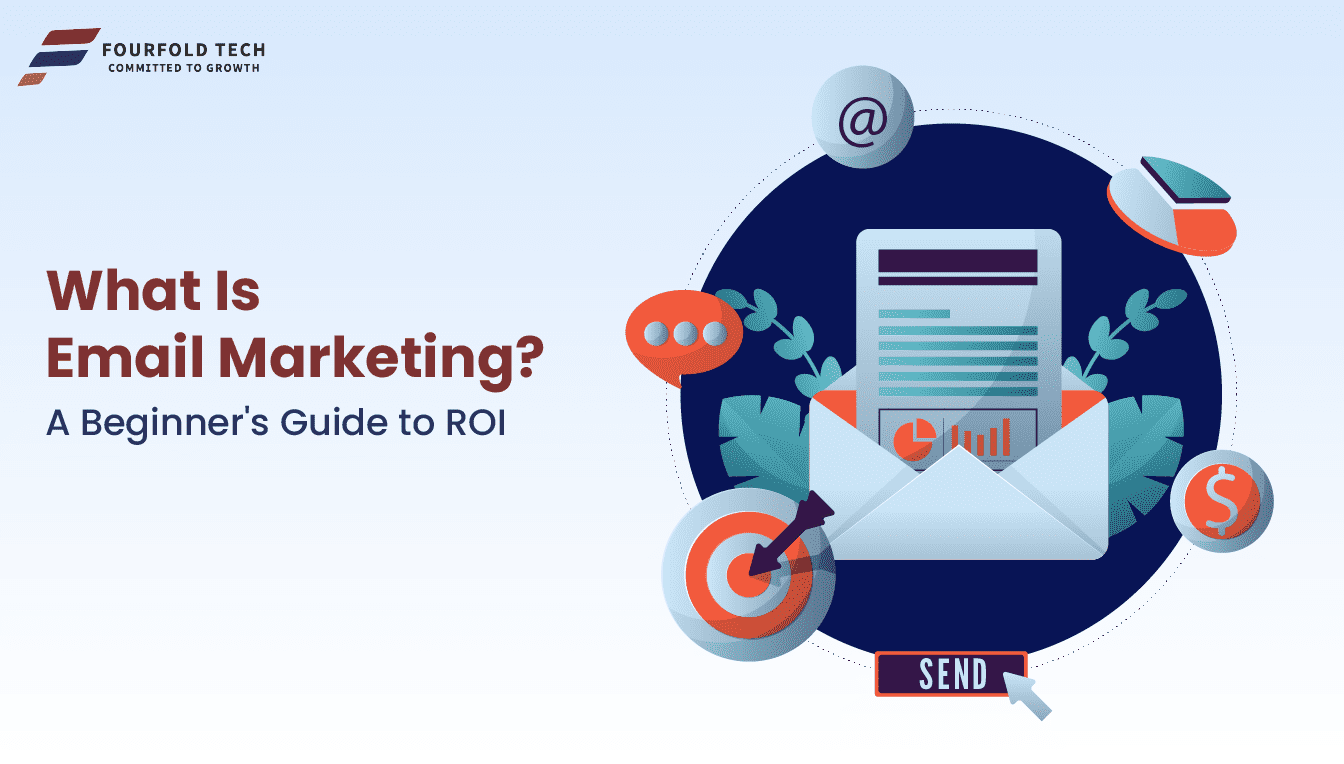
Email marketing brings great returns on investment. Many businesses make a costly mistake by ignoring their email lists.
What is email list neglect?
Businesses don’t deal very well with their subscriber lists. They don’t clean their lists regularly. They ignore subscribers who don’t respond. They fail to group contacts for targeted messages. Lists that get ignored lead to lower engagement and hurt the sender’s reputation. A real example shows the impact – Brian Dean of Backlinko saw his open rate jump 36% after removing 28,018 inactive subscribers.
Why email marketing still works
Email marketing creates impressive returns today. Companies see $15.29-$55.04 for every $1.53 they spend. These numbers beat social media by 13%. Email works 40 times better than Facebook or Twitter at getting new customers.
More benefits show email’s power:
- Marketing emails shape purchase decisions for 59% of consumers
- Last year, 52% of consumers bought products directly through emails
- Small businesses rate email as their best tool to keep customers – 80% agree
How to nurture and grow your email list
Double opt-in verification helps build a list of truly interested contacts. Group your audience based on how they behave and interact. Personalized emails can boost revenue up to 760%.
Keep your list clean. Remove inactive subscribers and invalid addresses regularly. This step helps more emails reach inboxes and prevents spam flags.
Your subscribers need value. Give them welcome messages, special content, and targeted offers that match their interests.
Low-Quality or Irrelevant Content
Poor content wastes your marketing budget. Companies don’t realize how much they hurt their success by putting out low-quality material in 2025.
What is low-quality content?
Bad content shows up in many forms. You’ll see “thin” material without depth, text stuffed with keywords, copied information, old facts, and basic grammar mistakes. It simply doesn’t help users or give your audience anything worthwhile. Buyers find less than half of today’s digital content useful, yet companies keep producing subpar material.
Why content quality affects ROI
Bad content hits your bottom line hard. It cuts your sales chances by 40% and makes vendors one-third less likely to pick you. Your buyers waste over 20% of their time dealing with ineffective content. The damage goes deeper – your brand’s reputation and customer trust take a serious hit.
How to create valuable content
Your content needs to work. Here’s what to do:
- Put your audience’s needs before pushing products
- Make it easy to read with short paragraphs, clear headings, and breathing space
- Back up your claims with solid research
- Keep your brand voice consistent everywhere
- Stand out from competitors with fresh views
Mix these basics with what your data tells you. Your readers will connect better with your content and take action more often.
Over-Reliance on AI Tools

Businesses blindly rush toward automation and depend too heavily on AI marketing tools. This common digital marketing mistake quietly weakens brand differentiation and customer relationships.
What is over-reliance on AI?
Businesses fall into the trap of excessive dependence on automated tools without proper human oversight. This shows up when companies use AI to produce final content without refinement. They let algorithms make strategic decisions unsupervised. Some even use AI as a replacement instead of an assistant for creative work. This approach weakens brand uniqueness by making every voice sound the same.
Why AI can’t replace human insight
Human involvement remains vital because AI tools have major limitations:
- AI lacks creative and original thinking it combines existing information rather than generating new ideas
- AI fails to grasp emotional subtleties and cannot build genuine customer relationships
- AI often misses contextual awareness and ethical considerations that could lead to inappropriate content
- AI systems mirror biases from their training data. Human oversight must identify and reduce these problems
How to balance AI with human creativity
These strategies help realize AI’s full potential while avoiding its drawbacks:
- Set clear boundaries AI excels at data analysis and automation while humans should guide creative direction and strategy
- Create human review processes for all customer-facing AI content
- Use AI as a foundation that needs human refinement to capture your brand’s unique voice
Not Optimizing for Local SEO
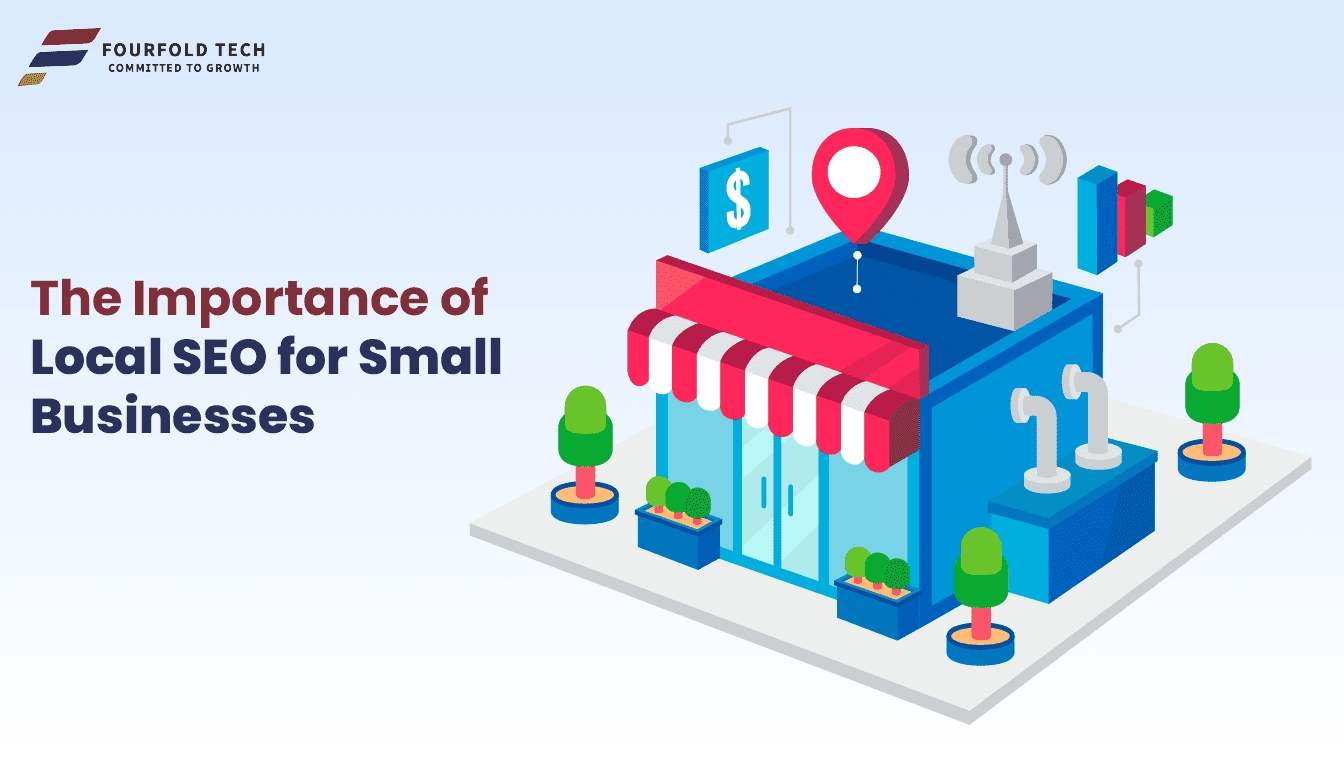
Local businesses lose money when they don’t show up in Google’s local pack. Companies lose valuable visibility by making this overlooked digital marketing mistake right when customers want to buy.
What is local SEO?
Local SEO makes your online presence attract customers who search in your area. Your business needs to appear in location-based search results whenever people look for nearby products or services. Small businesses can connect with their neighborhood or city customers through map listings and localized organic results.
Why local SEO matters for small businesses
80% of US consumers search online for local businesses weekly. The numbers tell an even better story – 76% of people who search for local businesses visit one within 24 hours. These statistics show a clear link between local search and actual store visits.
Local SEO gives businesses several advantages:
- Your traffic comes from people looking specifically for services in your area
- You get better conversion rates because local searchers are ready to buy
- Your business gains trust through visibility in local results
How to improve your local search visibility
Your local search presence needs these key elements:
Start with a fully optimized Google Business Profile that has accurate information, quality images, and regular updates. Your business name, address, and phone details should match exactly across online platforms. Customer reviews need your attention too – 98% of consumers read online reviews of local businesses, so respond to them regularly.
Comparison Table
| Digital Marketing Mistake | Effect/Cost | Key Statistics | Solutions | Key Metrics |
| No Clear Strategy | Wasted resources, duplicate work | 47% of companies lack defined strategy | Create SMART goals, build buyer personas, review digital assets | Strategic goals achievement, ROI |
| Ignoring Target Audience | Poor conversion rates, wasted marketing budget | 68% expect customized experiences; 760% revenue increase with segmentation | Build detailed customer personas, study current customers, keep refining | Customer satisfaction, conversion rates |
| Skipping SEO Basics | Less search visibility, lost organic traffic | 53% of traffic comes from organic search | Apply technical optimization, create E-E-A-T content, regular checks | Search rankings, organic traffic |
| Poor Keyword Research | Content invisibility, wasted content work | 88% use Google, 31% use social media for search | Connect keywords to topics, target long-tail keywords, use proper tools | Search volume, competition levels |
| Poor Mobile Design | Lost mobile users, lower rankings | 60% of web traffic from mobile; 53% abandon slow sites | Use responsive design, speed up pages, design for touch | Mobile load time, bounce rate |
| No Social Media Plan | Poor results, wasted budget | 1/3 of world population uses social media | Set clear goals, pick right platforms, plan content | Engagement rates, social ROI |
| Random Posting | Less algorithm visibility, lost trust | Not specifically mentioned | Use content calendar, prepare content batches, schedule posts | Posting frequency, engagement |
| Wasteful Ad Spend | Budget waste, poor campaigns | 70-80% waste in poorly executed campaigns | Plan budget wisely, test variations, check weekly | CTR, conversion rates |
| Skipping Analytics | Bad decisions, wasted money | 23% of marketers confident in KPI tracking | Set clear goals, watch KPIs, study performance | Conversion rates, ROI |
| Neglected Email List | Lost revenue chances | $15.29-$55.04 ROI per $1.53 spent | Use double opt-in, group audience, clean list regularly | Open rates, conversion rates |
| Poor Content | Fewer sales, damaged trust | 40% decrease in sale probability | Meet audience needs, check facts, stay on brand | Engagement metrics, conversion rates |
| Too Much AI | Lost brand voice, wrong content | Not specifically mentioned | Set AI limits, review by humans, use AI as guide | Content quality metrics |
| Ignored Local SEO | Missed local sales | 80% search locally weekly, 76% visit within 24 hours | Update Google Business Profile, keep info consistent, handle reviews | Local search rankings, store visits |
Conclusion
Digital marketing mistakes can quietly drain your business resources. You need to spot these errors to fix them. This piece identifies 13 costly mistakes that hurt marketing efforts in 2025. These errors range from poor mobile optimization to random content scheduling and can hurt your bottom line.
The digital world changes faster each day. Keeping up with best practices gets tough. Many companies don’t deal very well with strategy planning, finding the right audience, and measuring results. These areas directly affect marketing ROI. Our comparison table shows how these mistakes waste budgets and waste good chances.
Numbers tell the real story about these mistakes’ effects. Mobile searches create 80% of all conversions, yet companies ignore mobile optimization. Email marketing gives you $55 back for every dollar you spend, so neglecting your email list can get pricey. These facts show why fixing these issues matters now.
Your digital marketing needs a clear plan to work. Random posts, unclear strategies, and poor tracking lead to bad results. You might struggle with basic SEO or rely too much on AI tools. The good news? These problems have practical fixes that can reshape your marketing success.
Stop letting these digital marketing mistakes cost you money. Talk to an expert at Fourfold Tech today. We’ll analyze your website and digital marketing strategy at the best price to help you start. Small changes often create big results when you stick to them.
This integrated approach helps your business dodge common traps while discovering the full potential of your digital channels. Smart companies spot these mistakes early and act fast to fix them. Your business can thrive in today’s competitive market too.
Key Takeaways
These 13 digital marketing mistakes are costing businesses significant revenue in 2025, but they’re entirely preventable with the right strategic approach.
- Strategy is everything: 47% of companies lack a defined digital marketing strategy, leading to wasted resources and duplicated efforts across departments.
- Mobile optimization is non-negotiable: With 60% of web traffic from mobile devices and Google’s mobile-first indexing, ignoring mobile costs you rankings and conversions.
- Data-driven decisions win: Only 23% of marketers confidently track the right KPIs, yet businesses using analytics see significantly higher ROI than those making gut-based decisions.
- Email marketing delivers exceptional ROI: Despite being overlooked, email generates $15-55 for every dollar spent, making list neglect one of the costliest mistakes.
- Quality content drives results: Poor content decreases sale probability by 40%, while valuable, audience-focused content builds trust and drives conversions.
The most expensive mistake is operating without measurement and analysis. You can’t optimize what you don’t track. Businesses that address these fundamental issues systematically see immediate improvements in their marketing effectiveness and bottom-line results.


